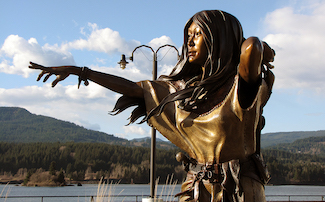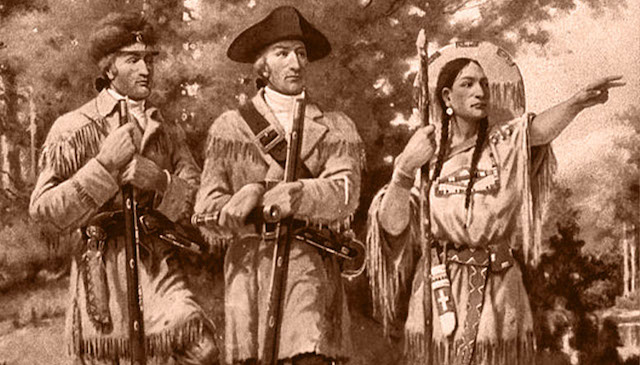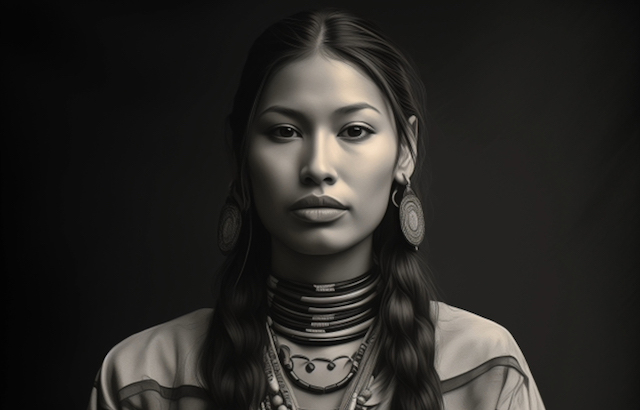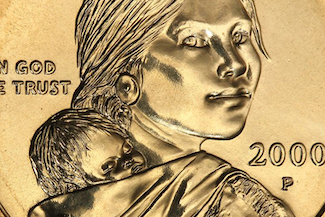 Back in the early 19th century, when the United States started its westward expansion, one remarkable woman emerged as an essential figure in American history: Sacagawea. Born around 1788 in what is now Idaho, Sacagawea was a Shoshone woman whose knowledge, skills, and resilience were instrumental in the success of the Lewis and Clark Expedition. Even though many of us have heard of her, not too many people know how important her role truly was. So, let’s learn a bit more about this extraordinarily brave and intelligent woman who helped shape the course of American history.
Back in the early 19th century, when the United States started its westward expansion, one remarkable woman emerged as an essential figure in American history: Sacagawea. Born around 1788 in what is now Idaho, Sacagawea was a Shoshone woman whose knowledge, skills, and resilience were instrumental in the success of the Lewis and Clark Expedition. Even though many of us have heard of her, not too many people know how important her role truly was. So, let’s learn a bit more about this extraordinarily brave and intelligent woman who helped shape the course of American history.
Sacagawea’s Early Life
Even though we don’t know too much about Sacagawea’s early life, we do know that it was marked by both hardship and resilience. Born into the Lemhi Shoshone tribe, she experienced the challenges of growing up in a nomadic society that frequently faced conflicts with other tribes. Around the age of 12, Sacagawea’s life took a dramatic turn when she was captured by a group of Hidatsa warriors during a raid.
They took her to their village where she was sold into marriage to Toussaint Charbonneau, a French-Canadian fur trader who already had another Native American wife. Despite the dramatic hardships, Sacagawea adapted to her new circumstances. But her experiences during this time, particularly her exposure to the languages and customs of different Native American tribes, would later prove important.
Joining the Lewis and Clark Expedition
In 1804, Sacagawea’s path intersected with one of the most significant exploratory missions in American history. President Thomas Jefferson had commissioned Meriwether Lewis and William Clark to lead an expedition to explore the newly acquired Louisiana Territory and to find a viable route to the Pacific Ocean. As they prepared for their journey, Lewis and Clark recognized the need for interpreters who could communicate with the Native American tribes they would encounter. They hired Charbonneau, believing his Shoshone wife could be particularly useful.
Sacagawea, then pregnant with her first child, joined the Corps of Discovery not just as an interpreter but also as a guide and symbol of peace. Her presence would later prove to be essential, as the sight of a young woman with a baby helped signal to Native American tribes that the expedition was peaceful. On February 11, 1805, Sacagawea gave birth to her son, Jean Baptiste Charbonneau, who was affectionately called “Pomp” by Clark. Remarkably, just two months after giving birth, she set out on the journey that would cement her place in history.
The Journey Across the Continent

Lewis, Clark and Sacagawea
Sacagawea’s contributions to the Lewis and Clark Expedition were a lot bigger and more important than it’s often taught in school. As the expedition made its way through the vast and uncharted territories of the American West, her knowledge of the land, languages, and customs was key. She was able to communicate with various Native American tribes. This helped with trade, and negotiations, and played a crucial role in the expedition’s success.
A great example of that is when the expedition reached the territory of the Shoshone tribe. Sacagawea discovered that the tribe’s chief was her brother, Cameahwait. This unexpected and emotional reunion was more than just a family moment; it was a turning point for the whole crew! Thanks to Sacagawea’s mediation, the Shoshone provided the explorers with much-needed horses and guidance, which enabled their journey across the Rocky Mountains.
She also helped the expedition navigate through difficult terrain, identified edible plants, and even saved important documents and supplies when a boat capsized in the Missouri River. Her calm demeanor and quick thinking under pressure earned the respect and admiration of Lewis and Clark, who documented her contributions extensively in their journals.
Challenges and Triumphs
Despite her incredible contributions, Sacagawea’s journey with the Corps of Discovery was filled with different challenges. The expedition members faced harsh weather conditions, treacherous terrain, and the constant threat of conflict with hostile tribes. However, like the badass woman that she was, Sacagawea while carrying her infant son on her back, had no issues facing these hardships. She was determined and showcased remarkable strength. Her ability to maintain composure and even care for a little baby under such extreme circumstances speaks volumes about her character.
One of the most notable examples of Sacagawea’s resilience occurred during a tense encounter with the Blackfeet tribe. The expedition was at risk of a violent confrontation, but Sacagawea helped calm the situation. Her peaceful and diplomatic demeanor, along with her status as a mother, played a key role in preventing potential bloodshed. This incident just proves how important her contributions were, and how important women like Sacagawea were during this time.

The Start of Her Recognition
After the expedition concluded in 1806, Sacagawea’s life returned to normal. Sadly, there’s not too much info about her later years. The historical evidence is sparse and often conflicting. Some accounts suggest that she died in 1812 in Fort Manuel, South Dakota, while other sources claim she lived to an old age among the Shoshone. Despite the confusion surrounding her later life, Sacagawea’s legacy endured through the detailed journals of Lewis and Clark, which highlighted her essential role in the expedition.
However, in the years following her death, Sacagawea’s contributions were largely overshadowed by the exploits of the expedition’s leaders. But as the United States grew and developed a greater appreciation for its diverse historical narratives, Sacagawea finally began to receive the recognition she deserved. In the 20th century, she became a symbol of the important but often overlooked role of Native American women in American history.
 In 2000, the U.S. Mint honored Sacagawea by issuing the Sacagawea dollar coin, depicting her carrying her infant son. This recognition was a significant step, and it helped spread the word about her contributions to the exploration and mapping of the American West. Even though it may seem small, her coin still serves as a reminder of her bravery and the role she played in one of the most significant exploratory missions in American history.
In 2000, the U.S. Mint honored Sacagawea by issuing the Sacagawea dollar coin, depicting her carrying her infant son. This recognition was a significant step, and it helped spread the word about her contributions to the exploration and mapping of the American West. Even though it may seem small, her coin still serves as a reminder of her bravery and the role she played in one of the most significant exploratory missions in American history.
Sacagawea’s Legacy
Sacagawea’s story has transcended the historical records, becoming a symbol of courage, perseverance, and the essential contributions of women and Native Americans to the nation’s history. She represents the resilience of indigenous peoples and the important roles they played in the shaping of modern America. Her legacy is celebrated in various forms, and her story is taught in schools across the country. Needless to say, Sacagawea continues to inspire new generations to appreciate the diverse and rich tapestry of American history. A great example of that is the Sacagawea Heritage Trail in Washington State, a scenic route that honors her legacy and contributions. Her story is a testament to the strength and resilience of women, particularly those from indigenous backgrounds, whose roles have often been overlooked in the annals of history.
Written by Kanita Bajrami for Malorie’s Adventures ~ June 10, 2024
